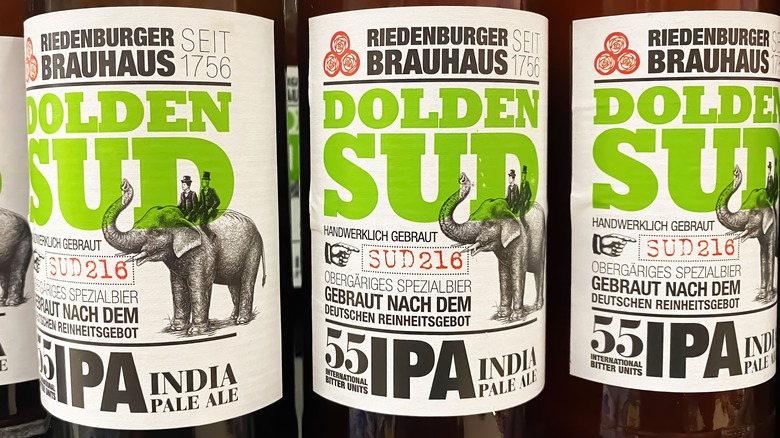What Gives Beer That Bitter Taste?
Though a beverage cherished by many, beer can have an acquired taste. When someone comes of drinking age, a common reaction when one tries an ale for the first time is one of surprise or even revulsion. The bitterness can be off-putting at first, but for seasoned connoisseurs, there's nothing like a potation with a perfect balance of its key component, hops.
Known as Humulus lupulus, hops are responsible for giving a lager its iconic foamy head and distinct bite. These cone-shaped flowers contain various amounts of alpha acids that break down when added to a wort during the brewing process and from iso-alpha acids, where most of the tartness in beer comes from. Generally, the longer hops are boiled, the more bitter the finished product will be.
Before beer, humans had gruit — a diabolical mixture created with ingredients like yarrow, juniper, and nettles, among other herbs and spices. Hops were eventually substituted when it was discovered they helped the concoction stay fresh longer due to their natural antibacterial properties. Though initially a matter of practicality, many brewers today proudly display the level of bitterness on the package to entice thirsty customers who crave the flav'.
IBUs measure a beer's bitterness
While light American lagers don't have much of a bite relative to their double IPA cousins, they're all brewed with the flavorful flowers. Those who prefer the latter, should keep their eyes peeled for the IBU or International Bitter Unit measure. IBUs are used to determine how many parts per million of isohumulone – an astringent chemical compounds produced by alpha acids – are present in a beer.
Variations with low IBU counts like Coors Light don't typically advertise their level of bitterness, but the maker of products such as Never Tell from Von Ebert Brewing, which has a whopping 102 IBUs, enjoys letting customers know it's created a drink with an unmissable bite. Though the scale ranges from 0 to 120, most folks can't sense bitterness past 100 IBUs. With craft IPAs being all the rage these days, displaying the IBUs on a container has become more of a marketing strategy than an accurate depiction of how pungent the beverage will be. While hop's alpha acids are largely what dictate bitterness, it's not working alone.
Beer's bitterness is also influenced by malt
Malted grains — generally barley, wheat, and rye — do their part as well to create a balanced, pleasantly bitter flavor. They're included in the brew as a source of fermentable sugars, which are necessary for producing alcohol. A light malt can smooth out the hoppy bitterness, but a darker one (the result of a longer grain roast), will complement it, adding notes of dark chocolate or coffee.
With around 147 known varieties of hops grown on bines – vines without tendrils — brewers today distinguish them by two categories — bittering and aroma hops. The former is utilized for the high alpha acid content, whereas aroma hops introduce flavor accents. Noble hops, used in the time of Reinheitsgebot — which is still observed in some areas of Europe – are classified as the aroma variety. While they don't add many alpha acids, they can accent the bitter notes in a beer.
Along with alpha acids, hops contain essential oils that provide notes of assorted bouquets like citrus and pine. Humulene, caryophyllene, and myrcene — a compound also notably present in cannabis – are some of the primary essential oils in hops that contribute to these aromas. These oils don't add IBUs, but in highly concentrated amounts they can embellish the perception of bitter alpha acids on the palate. Sulfur compounds in the brewing water, also play a small factor in this flavor balance, and depending what brewers are going for, can be left in or filtered out.


